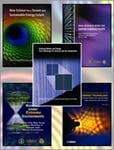The Chemical Sciences, Geosciences, and Biosciences (CSGB) Division supports experimental, theoretical, and computational research to provide fundamental understanding of chemical transformations and energy flow in systems relevant to DOE missions. This knowledge serves as a basis for the development of new processes for the generation, storage, and use of energy and for mitigation of the environmental impacts of energy use. (details)
The CSGB research portfolio consists of the research focus areas in the table below, which are managed within three organizational teams. Division staff membersare responsible for managing these areas, conducting the reviews of research proposals, and assessing the productivity of the funded research.
The CSGB Division emphasizes five synergistic, fundamental research themes that are at the intersections of multiple research focus areas. Ultrafast Chemistry develops and applies approaches to probe the dynamics of electrons that control chemical bonding and reactivity; to understand energy flow underlying energy conversions in molecular, condensed phase, and interfacial systems; and to elucidate structural dynamics accompanying bond breaking and bond making in chemical transformations. Chemistry at Complex Interfaces addresses the challenge of understanding how the complex environment created at interfaces influences chemical phenomena such as reactivity and transport that are important in photochemical, catalytic, separations, biochemical and geochemical systems. These complex interfaces occur between phases with disparate properties, are structurally and functionally disordered, and exhibit dynamics on timescales commensurate with those of the chemical phenomena of interest. Charge Transport and Reactivity explores how the dynamics of charges contribute to energy flow and conversion and how the charge transport and reactivity are coupled. Reaction Pathways in Diverse Environments discovers the influence of nonequilibrium, heterogeneous, nanoscale environments on complex reaction mechanisms in chemical conversions. Research in this area increases understanding of the factors controlling chemical processes and provides mechanistic insights into the efficiency, control, and selectivity of reaction pathways. Chemistry in Aqueous Environments addresses the unique properties of water, particularly how they manifest in extreme environments such as confinement (e.g., nanoscale pores) and complex multi-component, multi-phase solutions (e.g., concentrated electrolytes), and the role aqueous systems play in energy and chemical conversions.
Dr. Gail McLean, Director of Chemical Sciences, Geosciences, and Biosciences
| CSGB Teams and Research Focus Areas | ||
|---|---|---|
|
|
|
|
| Quantum Information Sciences | ||









